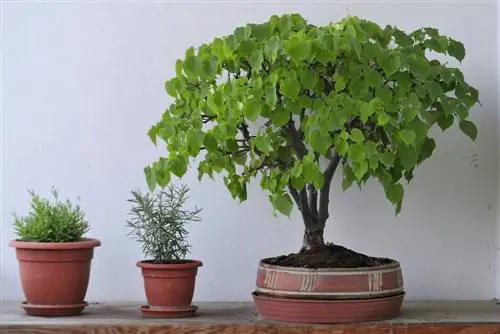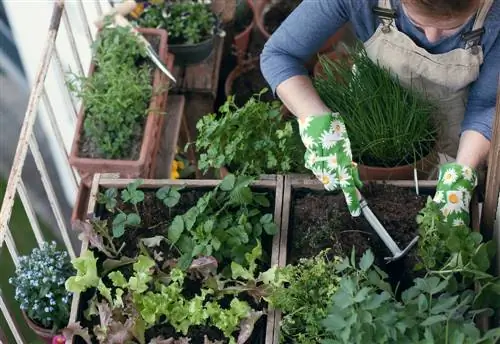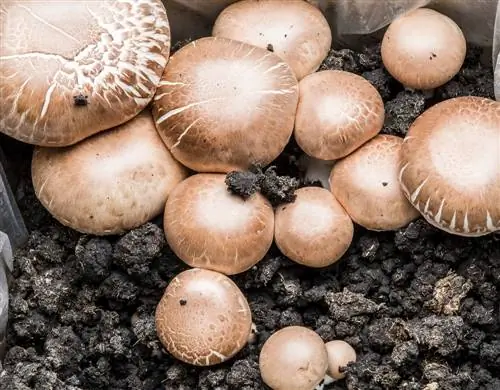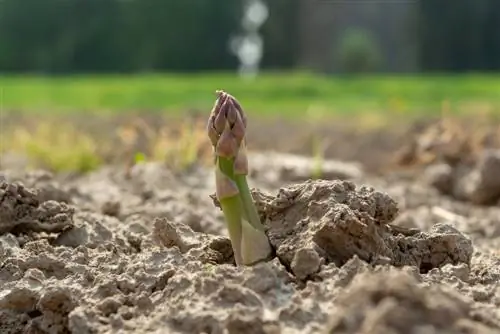- Author admin [email protected].
- Public 2023-12-16 16:46.
- Last modified 2025-06-01 06:02.
Every person should plant a tree once in their life, says an old saying. But not everyone has a large garden in which this project could be put into practice. However, in a sufficiently large pot and with proper care, such a tree can also be cultivated on the balcony. Of course, a 20 meter high maple won't fit there, but one of the numerous dwarf varieties will find a place almost anywhere.
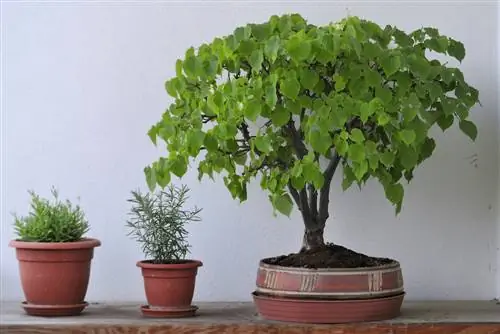
Which trees are suitable for the balcony?
Dwarf trees such as dwarf columnar beech, dwarf columnar oak, dwarf ash, dwarf beech and dwarf ornamental cherry are suitable for the balcony. Fruit trees such as columnar apple, dwarf apple, dwarf pear and dwarf sour cherry are also suitable. Conifers include dwarf pine, dwarf spruce, dwarf fir and dwarf balsam fir.
Dwarf trees are ideal for balcony gardens
Almost every tree species has special dwarf varieties that reach a maximum height of two meters and usually grow more like a bush. However, tall or semi-tall stems are often available in tree nurseries and garden centers, which can be wonderfully kept as a mini tree in a pot.
Deciduous trees
Many of the large representatives from forests and parks are also available in mini format. Whether maple, beech, oak, ash or chestnut: If the plant description has a “dwarf” in front of the variety name, it is a miniature breed. For example, the following are particularly nice for the bucket:
- Dwarf columnar hornbeam 'Monumentalis' (Carpinus betulus): columnar, very slow growing
- Dwarf columnar oak 'Menhir' (Quercus palustris): grows to a maximum height of 200 centimeters
- Dwarf ash 'Abiona' (Fraxinus excelsior): grows to about 100 centimeters high
- Dwarf beech 'Sandrode' (Fagus sylvatica): grows to a maximum height of 150 centimeters
- Dwarf copper beech 'Purpurea Nana' (Fagus sylvatica): grows to a height of approx. 200 centimeters
- Dwarf beech 'Asterix' (Fagus sylvatica): up to about 100 centimeters high, growing very slowly
- Dwarf ornamental cherry 'Kojou-no-mai' (Prunus incisa): grows to about 100 centimeters high
When it comes to size specifications, remember that they are not fixed: the actual growth of a tree depends heavily on the local growing conditions as well as the location and soil conditions.
Fruit trees
Fruit trees are deciduous trees, but occupy a special position because of the use of their fruits. Since there is now a large selection of columnar and dwarf fruit varieties, you don't have to go without apples, pears, cherries and plums from your own harvest on the balcony. Especially columnar fruit - be careful: not everywhere that says “pillar” on it is real columnar fruit! - is ideal due to its narrow growth. For example, very suitable are:
- Pillar apple 'Sonata'
- Dwarf apple 'Delgrina'
- Dwarf pear 'Luisa Kirchensaller'
- Dwarf sour cherry 'Morellini'
Even if these fruit trees remain rather small, the fruits still reach normal dimensions. As a rule, it is sufficient to plant these trees in a pot with a volume of ten liters (€26.00 on Amazon).
Conifers
Many species of conifers are also available in a pleasing dwarf form. For example, the following are pretty for the bucket:
- Dwarf or creeping pine (Pinus mugo var. pumilio): flat-spherical, up to 150 centimeters high
- Dwarf spruce 'Shadow's Broom' (Picea orientalis): very slow growing, up to approx. 80 centimeters high
- Dwarf fir 'Meyer's Dwarf' (Abies cephalonica): up to approx. 150 centimeters high
- Dwarf balsam fir 'Nana' (Abies balsamea): fragrant needles, very slow growing, up to 80 centimeters high
- Dwarf Nordmann fir 'Robusta' (Abies nordmanniana): up to approx. 300 centimeters, slow growing
Tip
Bonsai are also ideal for balconies and terraces. However, these are not dwarf trees, but rather normal trees - which are only kept small through special pruning and care techniques.

